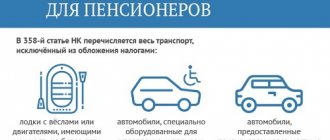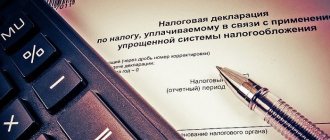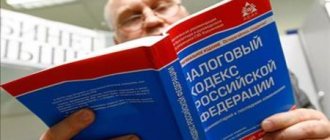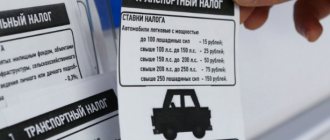General provisions
The EAEU today includes 5 countries: Russia, Armenia, Belarus, Kazakhstan and Kyrgyzstan. For all transactions that occur within this union, there is a special procedure for paying VAT, as well as a number of other taxes. The rules regarding the payment of taxes when making transactions between these 5 countries were established by the Protocol on the procedure for collecting indirect taxes and the mechanism for monitoring their payment when exporting and importing goods, performing work, providing services (Appendix No. 18 to the Treaty on the Eurasian Economic Union, which was signed in Astana on May 29, 2014).
Difficulties that may arise for exporters
Despite the simplified procedure for processing export-import transactions in the EAEU states, there are many peculiarities. For example:
- In the absence of confirmation of the 0% rate of Value Added Tax within a certain period, the exporter may be additionally charged VAT at the domestic rate on the amount of products sold for export.
- Tax inspection - you need to prepare for a serious desk audit of the exporting company and its counterparties.
- Some products are on control lists and require permits or licenses from various government agencies to be exported. Only an experienced customs representative can determine whether a product belongs to the control lists.
Our company guarantees the fulfillment of the guarantees assumed for the organization of foreign trade activities. With our help, customs clearance for the export of your products to Kyrgyzstan from Russia will be easy and transparent, and will also greatly expand the number of business contacts in both countries.
Service consultation
VAT on imports from Kyrgyzstan: determining the tax base
When paying VAT on imported goods, it is paid not as part of its cost, but separately to the budget of the receiving state. The tax regime and other features of the importer’s tax payment do not in any way affect the rules for paying import VAT. Let's look at the procedure for determining the tax base. The tax is paid at customs in most cases along with customs duties.
- The tax base is determined at the time the product is accepted for accounting and is formed on the basis of their cost. The cost in this case is the amount indicated in the supply contract, or in any other basis for payment for the goods (for example, an invoice).
Attention: an exception when calculating the date of acceptance of a product for accounting is products that were received on the basis of a leasing agreement, moreover, one that provided for the transfer of the right to the product in full to the lessee. In this case, the tax base is determined as many times as lease payments are made.
- If the product was purchased not for rubles, but for another currency, then it is necessary to recalculate the cost of the product at the rate that was set by the Central Bank at the time the product was accepted for accounting.
- The tax base is multiplied by the tax rate, which, as we have already found out, can be either 10% or 18%.
Calculation example: for example, you purchased goods worth 18,650 US dollars from a Kyrgyz supplier, payment was made in dollars. Similar goods in Russia are taxed at a rate of 18%. The dollar to ruble exchange rate on the date the goods were accepted for accounting was 56.14 rubles. So, let's calculate VAT: 18,650 x 56.14 x 0.18 = 188,461.98 rubles.
Peculiarities of calculation and payment of tax when importing from the EAEU
What distinguishes the procedure for assessing VAT on goods imported from the EAEU countries? There are several features here:
- The tax is calculated and paid not at the time of import, but after the goods are received by the buyer or the next lease payment is due, if we are talking about the subject of the leasing transaction (clause 19 of Section III of Appendix No. 18 to the EAEU Agreement).
- You must pay VAT not at customs, but to the tax authority.
- The calculation of the amount of tax due is carried out by the importer, determining the tax base for him on the date of acceptance of the goods for accounting or on the payment date specified in the leasing agreement.
- The calculation process is reflected in reporting documents of special forms drawn up at the end of each of the months in which imports took place. If there were no import operations in some months, then there is no need to submit zero reporting. However, when imports are carried out every month, then reporting under the EAEU-VAT becomes monthly.
- There is a special deadline for paying tax and reporting on it, different from the deadline for regular VAT. It corresponds to the 20th day of the month following the month of import (clauses 19, 20 of Section III of Appendix No. 18 to the Treaty on the EAEU). However, in terms of interaction with the Federal Tax Service, a rule is applied to shift this period if it coincides with a weekend to a later date corresponding to the nearest weekday (Clause 7, Article 6.1 of the Tax Code of the Russian Federation).
The tax base for calculating the EAEU-VAT includes the cost of the goods themselves, indicated in the accompanying documents, as well as the excise tax (if the goods are excisable). If it is necessary to recalculate the value of a product into a value expressed in Russian rubles, the conversion rate is taken as of the date the product was accepted for accounting (clause 14 of Section III of Appendix No. 18 to the Treaty on the EAEU). If the price is not indicated in the accompanying documents, then the accounting value of the goods becomes the base.
The subject of the leasing agreement is subject to taxation in parts (as the deadline for making leasing payments stipulated by the leasing agreement arrives). Moreover, a payment made in foreign currency is also recalculated for tax purposes into Russian rubles at the rate, but this rate should be determined on the payment date specified in the leasing agreement, regardless of when and in what amount the payment was actually made ( clause 15 of Section III of Appendix No. 18 to the Treaty on the EAEU).
The rate used to calculate the tax depends on the type of imported goods (clause 15 of Section III of Appendix No. 18 to the Treaty on the EAEU). For 2021, its size in Russia will be, respectively, either 20% or 10% (Article 164 of the Tax Code of the Russian Federation).
The following goods are exempt from EAEU-VAT:
- not subject to VAT in accordance with Art. 150 of the Tax Code of the Russian Federation (subclause 1, clause 6, article 72 of the Treaty on the EAEU);
- being customer-supplied raw materials (clause 14 of section III of Appendix No. 18 to the Treaty on the EAEU);
- purchased from a Russian supplier, but delivered to the buyer through the territory of the EAEU country (letter of the Ministry of Finance of Russia dated February 26, 2016 No. 03-07-13/1/10895).
Application of a special regime (Unified agricultural tax, simplified tax system, UTII, PSN) or exemption provided for in Art. 145 of the Tax Code of the Russian Federation, does not relieve the importer from paying import VAT and filing reports on it (clause 13 of section III of Appendix No. 18 to the Treaty on the EAEU).
We declare and pay tax
Payment of import tax is very strictly regulated. Thus, VAT must be paid by the 20th day of the month following the day when the product was accepted for accounting. Also, before the 20th day of the next month, you must submit a declaration to the Federal Tax Service. The declaration is submitted in the old form and can be found in the appendix to Order No. 69 of the Ministry of Finance of the Russian Federation dated July 7, 2010.
You should be careful when filling out and submitting the declaration, because unlike the usual one, the import VAT declaration must be submitted not for the quarter, but for the month. If you receive goods regularly, you will have to submit a declaration every month.
Export to Kyrgyzstan VAT
In the period from January 2015 to the end of June 2021, exports to Kyrgyzstan were subject to VAT in Russia and VAT tax deductions were applied in the following order.
General rule for VAT taxation (both for sales in the Russian Federation and for export): VAT taxpayers have the right to reduce the calculated amount of tax by tax deductions established by Article 171 of the Tax Code of the Russian Federation in the manner established by Article 172 of the Tax Code of the Russian Federation. In accordance with the latter, taxpayers have the right to apply tax deductions in the amount of “input” VAT after accepting purchased goods, works, and services for accounting.
Unlike domestic Russian sales, export sales are taxed at a tax rate of zero percent. In the period until June 2016, Russian taxpayers-exporters were required to document the right to apply the zero VAT rate and the right to apply the corresponding tax deductions. In addition, when selling for export, a special procedure has been established for applying deductions for “input” VAT.
Taxpayers - exporters have the right to apply a zero VAT rate and deductions of “input” VAT only if they submit to the tax authority a set of supporting documents established by Article 165 of the Tax Code. VAT on exports is calculated no earlier than the moment the tax base is determined, established by Article 167 of the Code. (Clause 3 of Article 172 of the Tax Code).
The VAT tax base for exports arises on the last day of the quarter in which a complete package of documents confirming the exporter’s right to a 0 VAT rate, provided for in Article 165 of the Tax Code (clause 9 of Article 167 of the Tax Code of the Russian Federation), is collected. A period of 180 days is allotted for collecting documents. If the exporter does not have documents on the 180th day, export VAT is taxed at the rate of “domestic” sales (10% or 18%, respectively) with the accrual of corresponding penalties from the date of shipment.
In accordance with Article 165 of the Tax Code of the Russian Federation, “documents confirming export from Russia”: 1) a contract between the Russian exporter and a foreign partner (copy of the contract), 2) a customs declaration with marks from the Russian customs authority that released the goods in the export procedure, and the Russian customs authority of the place of departure , through which the goods were exported from the territory of the Russian Federation, 3) copies of transport, shipping and (or) other documents with marks from the customs authorities of the places of departure, confirming the export of goods outside the territory of the Russian Federation.
However, “in life”, nothing prevents the exporter from considering goods purchased for export as goods intended for sale within Russia, and applying deductions of “input” VAT according to the general rule of Articles 171, 172 of the Tax Code of the Russian Federation - after accepting the goods for accounting.
The subsequent sale of goods for export (transactions taxed at a VAT tax rate of 0 percent) creates a situation in which the exporter’s deduction of “input” VAT in the general procedure becomes illegal, since it violates the rules of paragraph 3 of Article 172 of the Tax Code of the Russian Federation. That is, the deduction is applied for the sale of taxable interest at a tax rate of zero until the tax base established for a tax rate of this type arises (in accordance with paragraph 9 of Article 167 of the Tax Code of the Russian Federation, this is the last quarter in which all documents confirming the right to a zero rate are collected percent).
As you can see, taxpayers-exporters may have the right to apply tax deductions for “input” VAT twice: the first time - in the general manner according to the rules of Article 172 of the Tax Code after accepting the goods for registration, the second - in the case of export of goods, according to the rules of paragraph 3 of this articles. In case of double exercise of the right to deduction, the taxpayer-exporter receives unjust enrichment.
To eliminate unjust enrichment, when selling for export before January 2015, the norm of subparagraph 5 of paragraph 3 of Article 170 of the Tax Code obliged exporters to restore the deduction of “input” VAT accepted after the purchased goods were accepted for accounting.
The situation with repeated deductions of VAT has worsened since January 1, 2015, when subparagraph 5 of paragraph 3 of Article 170 of the Tax Code ceased to apply and the obligation to restore VAT accepted for deduction in the general procedure in the event of subsequent exports ceased.
According to the Ministry of Finance, even in the absence of this norm, in such situations taxpayers were still obliged to restore the “input” VAT previously accepted for deduction.
True, the Ministry of Finance did not provide a legal basis for such an obligation, but referred to the very possibility of the taxpayer to apply deductions twice.
The position of the Ministry of Finance on these issues is set out in letter dated 02.13.15 No. 03-07-08/6693.
In our opinion, from January 2015 to July 2021, there was a legislative gap.
The fact is that the norm of paragraph 1 of Article 165 of the Tax Code, which was in force during this period, established that the submission to the tax authority of the documents specified in Article 165 of the Code is the basis not only for the application of a tax rate of zero percent, but also for tax deductions. At the same time, the obligation to restore previously deductible VAT from the code was removed from the code. Thus, the legislator established the right of the exporting taxpayer to deductions in Articles 171 and 172 of the Tax Code, and the possibility of applying them twice in relation to one product.
Who is required to pay import VAT?
Based on legislative acts related to the EAEU, it is possible to distinguish categories of citizens and legal entities who are required to pay import VAT when working with counterparties from Kyrgyzstan.
| Pay tax | Don't pay tax |
| All companies and individual entrepreneurs that import products from the EAEU. This applies even to those persons who, according to the Tax Code of the Russian Federation, are exempt from paying regular VAT. | Persons who have imported the product for their own use and who do not intend to sell it or conduct any business activity involving it. |
Some products are not subject to tax:
- products that were imported under the customs zone regime under the “free” sign;
- companies that are exempt from paying fees in accordance with Art. 150 Tax Code of the Russian Federation;
- when transferring products from one department of the organization to another (for example, if one division is located in Kyrgyzstan and the second in Russia.
Important: if you are not sure whether you will need to pay VAT or not, you can consult Art. 150 of the Tax Code of the Russian Federation - other legislative acts are built around it.
There are different ways to pay VAT. The most common is payment through the Federal Tax Service. However, you can only pay through the inspection the VAT that was received only on goods that were manufactured in the EAEU member countries, as well as those that, although they were manufactured in other countries, were officially released into free trade in the territory of the entire so-called Customs union.
Legislation of the Kyrgyz Republic
The database "" contains laws, codes, regulations, decrees, rules, instructions and other documents in Russian. A special part is entirely devoted to certain types of taxes and special tax regimes. The law distinguishes two types of taxes in Kyrgyzstan: Land tax.
Payers are land owners and land users. Base – area of the site. The rate depends on the area in which the site is located, as well as on its purpose.
Also, the tax legislation of Kyrgyzstan provides for a number of special tax regimes, such as
- compulsory and voluntary patents
- single tax
- tax contract
The tax legislation of Kyrgyzstan can be characterized not only as modern, detailed and easy to understand, but also as one of the most liberal in the entire former USSR. Its distinctive feature is the extremely low tax rates for basic taxes (income, profit, VAT) compared to similar rates among its neighbors and partners in the CIS. The quantitative component also cannot but please taxpayers: there are few taxes collected on the territory of the state.
For example, in Russia, citizens and organizations pay much more taxes to the budgets of various levels, both in terms of the number of items and in monetary terms.
Such a soft tax burden is usually attractive for business development and foreign investment.
The article was prepared by specialists from SoyuzPravoInform LLC.
© SoyuzPravoInform. At a reprint the reference to the source is required.
Required documents
Along with the tax return, you also need to provide a number of documents:
- A statement that you have imported a certain product;
- Documents confirming the fact of tax payment (for example, a bank statement);
- Accompanying documents (waybill);
- If the product was purchased through the services of intermediaries, then you must provide an agreement between your organization and the intermediary;
- The basis for payment and import of goods into the territory of the Russian Federation (for example, an agreement or invoice).
Please note: you can submit your application either electronically or in printed form.
You can submit documents electronically through the State Services website, as well as through the Tax Service website. The document must be signed with an electronic signature. If you submitted an application electronically, there is no need to submit it again in paper form. Also, if you submit an application in printed form, there must be 4 copies, as well as 1 more copy in electronic form on removable media.
You may not provide a bank statement to confirm the fact of payment of VAT when your organization has overpaid taxes and fees that go to the federal budget, because in this case the Federal Tax Service may decide to offset import VAT against the invoice overpayments.
Accompanying documents (in particular, the waybill) may also not be able to be submitted to the Federal Tax Service due to the fact that, according to the legislation of Kyrgyzstan, suppliers have the right not to issue such a document. The same applies to other accounting documents, such as invoices.
The supplier may be required to send a letter on official letterhead stating where the product came from. Such a letter may not be provided to the Federal Tax Service when all this data is indicated in other documents provided, for example, in a contract.
Do not forget that if you work under a contract with intermediaries, then you must submit documents such as an agency agreement, or a commission or assignment agreement to the Federal Tax Service.
A set of supporting “import” documents
Simultaneously with the tax return, the taxpayer must submit the following documents to the tax authority (clause 4 of Section III “Procedure for levying indirect taxes on the import of goods” of the Protocol):
- an application on paper (in four copies) and in electronic form, or an application in electronic form with an electronic (electronic digital) signature of the taxpayer;
- a bank statement confirming the actual payment of indirect taxes on imported goods, or another document confirming the fulfillment of tax obligations for the payment of indirect taxes, if provided for by the legislation of the Member State;
- transport (shipping) documents confirming the movement of goods into the territory of the Russian Federation. These documents are not submitted for those types of goods for the movement of which the registration of such documents is not provided for by the legislation of the Russian Federation;
- invoices issued in accordance with the legislation of the Member State upon shipment of goods, if their issuance (extract) is provided for by the legislation of the Member State;
- commission agreements (contracts), instructions or agency agreement (contract), if intermediary agreements have been concluded;
- an information message submitted to the importer by a taxpayer of another Member State or a taxpayer of a state that is not a member of the Union selling goods imported from the territory of a third Member State;
To fill out an application electronically, you need to download a special program located on the website at: nalog.ru.
FEATHER PARTICIPANT, REGISTRATION
Section 2 is completed by the tax authority. An official of the tax authority, within ten working days from the date of receipt of the application and documents provided for in the Agreement that accepted the Application, must consider it and confirm the fact of payment of indirect taxes (exemption or other method of payment) and put the appropriate mark in section 2 of the Application or refuse with reason. appropriate confirmation. The importer must submit one copy of the application to the Kyrgyz supplier for confirmation by the latter of the zero VAT rate.
Who takes into account import VAT and how?
There is a difference between including VAT on the cost of goods and accounting for VAT on expenses. Let's figure it out.
| Taken into account in the cost of goods | Taken into account in expenses |
| 1. Companies that operate under the general tax regime, or that use UTII; 2. Companies that, according to Art. 145 Tax Codes of the Russian Federation were exempt from taxation; 3. VAT payers if the products purchased from a member country of the EAEU were purchased in order to carry out activities to which payment of VAT does not apply, or for activities that cannot be carried out on the territory of the Russian Federation. | 1. Companies that use the “simplified” system of “income minus expenses”; 2. Companies that operate under the single agricultural tax system; |
When we take EAEU-VAT for deduction
The tax that arises when goods are imported into the Russian Federation from EAEU countries can be taken as a deduction. However, for this it is not enough to fulfill the conditions provided for in paragraph 2 of Art. 171 and paragraph 1 of Art. 172 of the Tax Code of the Russian Federation (i.e., acceptance of goods for registration, their intended use for operations subject to VAT, and payment of tax).
The necessary points for the possibility of carrying out this procedure, due to the mandatory registration, also become (letter of the Ministry of Finance of Russia dated 07/02/2015 No. 03-07-13/1/38180):
- presence of an import application signed by the tax authority;
- adoption by the Federal Tax Service of a declaration reflecting data on it.
That is, the procedure for accepting EAEU-VAT as deductions turns out to be more complicated than when importing goods from countries outside this union. Let us recall that in the latter situation, it is sufficient to have a customs declaration with the amount of tax paid reflected in it and confirmation of the fact of its payment.
Persons enjoying VAT exemption under Art. 145 of the Tax Code of the Russian Federation, and special regimes for whom the fact of import leads to the obligation to pay import tax cannot take advantage of deductions, since they are not payers of the usual VAT for the Russian Federation. They will have to include such a tax in the cost of the purchased goods (subclause 3, clause 2, article 170 of the Tax Code of the Russian Federation).
We subtract import VAT
You can deduct VAT if you apply the normal tax regime and are not exempt from paying VAT. Deduction of import VAT is possible only after you have paid it and you have all the documents to confirm this. There are no other official conditions for tax deduction; however, tax authorities often also require you to provide a statement that you imported the goods and paid tax on them. However, this is not a mandatory condition, and you have every right to refuse to comply with it.
An organization can submit documents for deduction only when several conditions are met. Product was purchased:
- In order to use it only on the territory of the Russian Federation, either for temporary transport, or for its processing;
- The product was purchased for an activity that is subject to value added tax;
- The product has been accepted for accounting.
Attention: if at least one condition is not met, then you do not have the right to apply for a deduction.
VAT on exports to Kyrgyzstan
VAT deductions from July 2016
Changes to the Tax Code of the Russian Federation, introduced by Law No. 150-FZ of May 30, 2021, are aimed at eliminating the unsuccessful legal structure described above.
The period that has passed since May 2021 has confirmed our position - the new edition of Articles 165 and 172 of the code did not simplify, but complicated the position of exporting taxpayers: the accounting services of exporters have increased work and legal uncertainty. This situation was fully manifested when calculating VAT on exports to Kyrgyzstan.
Exporters cannot calculate VAT normally, since the calculation now depends on the by-law of the Government of the Russian Federation, which as of February 14, 2021 has not been adopted.
VAT deductions from July 2021. The procedure for applying deductions of “input” VAT on exports for exporters depends on the category of the exported product. Now exporters will have to determine whether the exported goods are classified as raw materials or not, and, depending on the category, apply VAT on export sales.
Law No. 150-FZ, paragraph 3 of Article 172 of the Code, on the procedure for applying deductions for sales transactions at a tax rate of zero percent, is supplemented by paragraph 3 with the following content:
The provisions of this paragraph do not apply to operations for the sale of goods specified in subparagraph 1 (except for raw materials) and subparagraph 6 of paragraph 1 of Article 164 of this Code.
That is, from July 2021, if non-raw materials , tax deductions for “input” VAT are applied in the same manner as for domestic sales - after the goods are accepted for accounting. From July 2021, it is no longer necessary to confirm the right to deduct “input VAT” on exports, as was the case before Law 150-FZ.
This unification with internal implementation corresponds to the change in paragraph 1 of Article 165 of the Code, according to which, from July 2021, the documents listed in the article confirm only the right to apply the VAT tax rate of zero percent , but not the right to apply VAT deductions.
With such a legal structure, it is logical that there is no obligation for the exporter to restore the “input” VAT previously accepted for deduction in the case of exporting goods and applying a VAT tax rate of zero percent.
Exporters are upset by the lack of a real opportunity to apply the “simplified” procedure for applying deductions for non-commodity exports, since until now (February 2021) the Government has not approved the corresponding list of foreign trade codes.
Deductions of “input” VAT on exports are allowed for raw materials
When carrying out export transactions with raw materials , the previously existing (since January 2015) procedure for applying tax deductions for “input” VAT is retained. What are “commodity goods” for calculating VAT, you will read below, and read more about the list of raw materials in a special publication on our website.
As before, for raw materials, deductions can be claimed only at the time of determining the tax base according to the rules of Article 167 of the Code, that is, not earlier than the last day of the quarter in which the full package of documents provided for in Article 165 of the Tax Code is collected.
If export confirmation is not confirmed (absence of supporting documents) within 180 days from the date of shipment of the goods for export, the zero percent VAT tax rate is not applied to the sale transaction; the sale of export goods is subject to VAT at regular rates.
Reimbursement for unconfirmed exports
From July 2021, subsequent documentary confirmation of the right to apply a tax rate of 0 percent provides the exporter with the opportunity to deduct the paid VAT (on unconfirmed exports) in accordance with paragraph 3 of Article 171 of the Tax Code, and not reimburse it, as was previously the case in accordance with Article 176.
From July 2021, the described procedure for calculating VAT applies only to sales of raw materials for export.
Accounting entries
Let's look at the accounting entries when working with import VAT:
| Operation | Debit | Credit |
| We reflect the price of the product | 60 | 51 |
| We pay for the goods | 60 | 51 |
| We charge VAT for payment to the Federal Tax Service | 19 | 68 (sub-account “VAT calculations”) |
| Paid VAT | 68 | 51 |
In order to consider in more detail the process of accounting entries, as well as everything related to the import of VAT from Kyrgyzstan, one of the EAEU member countries, you can use the Treaty on the EAEU and Appendix %18 to it. Also on the official website of the tax service there is a section “Customs Union”, where other application documentation is located.
Registration of offset of Value Added Tax when exporting to Kyrgyzstan
Starting from 07/01/2016, the right to offset input VAT, in other words, to refund the Value Added Tax on the transaction amount when making export deliveries, arises with the exporting company at the time of registration of the incoming tax return, and not after providing the required set of accounting documents. Confirmation of the 0% Value Added Tax rate for export to Kyrgyzstan must be issued within one hundred and eighty calendar days from the date of shipment of the products.
In order to prove a 0% rate, the following set of documents is required:
- Foreign economic contract (copy);
- Contact account number (former transaction passport);
- Shipping documents (copies) (invoices, waybills in the TORG-12 form, waybills or CMR);
- Application (original) for payment of taxes from the importer, or notification from the tax office of the importer's state about acceptance and payment of taxes in their country.








